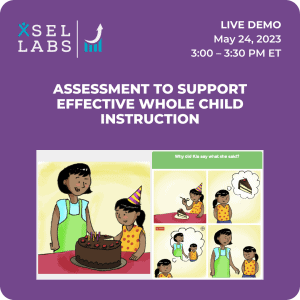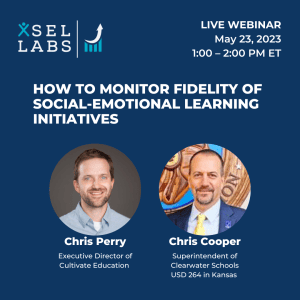With nationwide school closures in effect, many households have become unplanned home schools, and parents have become teachers, with all of the responsibilities that go with the job, including setting the climate for learning, managing “student” behavior, and supporting student motivation.
In my non-scientific sample of a handful of new home schools, one theme stands out: it’s hard work. Most parents will find their way through a combination of instinct and trial and error. There are a few things that parents as teachers can do right now that can make their teaching experience, and the experience of their children, go well.
Most of our readers are educators, and many are also parents. I offer these ideas for your consideration. If you think they will help the parents in your community who are now your close partners in educating students, please feel free to forward this to them.
School Rules: Setting Expectations
In talking with friends and colleagues, it’s clear that many are setting the stage by establishing agreed-upon expectations for how things will go, including how family members will treat one another. Here are some examples of how families are doing this:
- One family met and, using a strategy from an SEL program called RULER, established a “charter,” which described how they want to feel at home and how they will act and treat one another to support those feelings, along with how they will manage unwanted feelings and conflict. Every family member had a say, and they committed their charter to writing.
- Another family member drafted a “constitution” establishing the rules of the road, including who is responsible for what, how spaces in the house are to be used, and even who the mascot is (spoiler: the dog).
- Another family decided that they would treat home life as if they were on a spaceship that had embarked on an interstellar voyage. With that as the backdrop, they hammered out daily routines and ways to treat one another that would help in the days and weeks ahead.
Whether it’s in the context of a charter, a constitution, or an interstellar voyage, the common theme here is that these families took steps to decide intentionally how they want to behave, to treat one another, and ultimately, to support one another through an unusual and upsetting time. In a time that feels out of our control, this is a small way of taking matters constructively in our own hands. It sets us up for kindness and support, even as we navigate close quarters and, sometimes, frayed nerves. And it sets positive conditions for learning in what has become an unplanned schoolhouse.
Teaching Social and Emotional Competencies
This unplanned moment in history presents an opportunity to engage parents as partners in student social and emotional learning like never before. Educators know that academic learning requires students to be able to manage their emotions, to understand and work with others, and to resolve conflicts, and that these competencies can be taught alongside academic skills.
Long before SEL programs, teachers have worked to support their students’ social and emotional competencies. So have parents. Educators are increasingly making this work explicit by intentionally teaching these competencies. Now parents have a chance to do the same. How might that work?
I guarantee that life in the spaceship will present itself with opportunities to work on many social and emotional competencies. Let’s consider a few.
Emotion management
Children may have concerns about what is going on, or simply be out of sorts because of the disruption in their routines.
- Help them name how they feel. If they can’t articulate it, state it simply for them, as in, “I get the feeling you’re worried.”
- If one of the feelings is worry or fear, acknowledge it, and normalize it by acknowledging that they are not alone.
- Worry arises from uncertainty and a lack of control over circumstances. Let your child know what is in their sphere of influence to manage circumstances and the feelings they evoke. Some of this involves things like the norm-setting routines described above; some involves the steps you as a family can take to stay safe and healthy, like social distancing handwashing. Some may involve self-talk reminding that we will get through this.
- Distraction is helpful too. As such, set a list of acceptable diversions, like watching television for a set period. And of course, find healthy ways to manage your own emotions in these stressful times.
Procrastination over schoolwork is also an opportunity for emotion management. Procrastination is almost always a way to avoid situations that provoke unwanted emotions like worry or “boredom.” Boredom, by the way, is not an emotion—it’s a code word for unwanted emotions, most often anxiety. So if your child/student is avoiding homework, see if you can learn what he feels about the assignment, and “boring” is not an allowable explanation. If your child can’t name the feeling, use a prompt like, “Sometimes, when kids have to do homework, it makes them feel _______ or ________ or ________. I’m trying to figure out what it’s like for you.” Then stop until your child volunteers an emotion word. Normalize the emotion (see above).
Next, help your child manage his emotions. “Self-talk” is a helpful way to manage emotions. These are statements that counteract unwanted feelings. Here’s how to “do” self-talk:
- Your child can generate useful self-talk by saying what advice he would give a friend who felt that way and then using that statement as his self-talk.
- For, example, a child who worries he is not good at math might tell a friend, “If you work hard, you can learn the math.”
- Change the wording to make it a self-statement: “If I work hard, I can learn the math.”
P.S. Also, help your child learn the math!
For more creative activities to support children’s social and emotional development, our friends at Move this World are offering these free resources. My colleague Keeth Matheny from SEL Launchpad, in collaboration with the team at School Connect, also created these terrific videos and worksheets–perfect for home use. You can also find free lesson plans at this link–use what makes sense for you.
Recognizing the emotions and perspectives of others
It’s important, particularly in close quarters, for us to be mindful and respectful of each other’s feelings and experiences. That means we need to “see” each other now perhaps more than ever. Humans are wonderfully expressive and aren’t very good at hiding our feelings. We show them on our faces, in our voices, in our posture, and even in our gait. Use this fact to practice compassion and the specific competencies that make compassion possible—specifically, recognizing the emotions and perspectives of others. Here’s how:
- A few times a day have everyone say what they think others in the family are feeling and how they can tell.
- If one family member appears to be upset, stop the action and ask another what that person is feeling.
- Take it a step further and ask what the person is thinking. By understanding others’ points of view, this exercises the perspective-taking muscle.
Practicing emotion recognition and perspective-taking can also be folded into academic work too—particularly language arts and literacy. If a child is reading a book, for example, prompt her to describe how a character feels and thinks in a particular scene and have her describe how she knows that. This deepens students’ connections to what they are reading and gives them an opportunity to exercise their social and emotional muscles.
Problem-solving
It’s fair to predict that in close quarters over an extended period, we may get on each other’s nerves from time to time (see “spaceship” above). Whenever there’s a dustup, social problem-solving can help. When there’s a problem or disagreement, here are the social problem-solving steps:
- Stop and calm down.
- Say what the problem is.
- Generate several alternative solutions.
- Weigh the pros and cons of each option.
- Pick the best one.
- Evaluate how well it worked and revisit if needed.
At the risk of giving away my age here, social problem-solving is kind of like the board game “Othello.” The tag line for Othello was, “It takes a minute to learn, and a lifetime to master.” In other words, even though social problem-solving seems simple, when you try it, you’ll find that in the heat of the moment, it’s not easy. Keep working on it even if it doesn’t work at first. As you get better at it, social problem-solving can be enormously helpful for you and your children.
Motivating Students
How do you keep your students “on task” and motivated to continue to do the academic work? There is no easy answer to this, but there are a few things you might consider.
First, make it interesting. No one likes rote or boring work, in or out of school. All of us, from early childhood through adulthood, are most motivated by work that feels meaningful. But what is meaningful? For me, writing this blog is meaningful, because I’m wrestling with a challenging topic and working to articulate ideas that I hope are useful to others. This is hard. But it’s also highly engaging and rewarding.
One parent I know shared that her teenage daughter was in a bad mood and complained of having nothing to do. This mom told her daughter that staying engaged in work had helped her feel engaged with others in meaningful activities. She shared that doing so helped take her mind off world events and helped her do something that made a positive difference, which felt good. She encouraged her daughter to find a project that was challenging and interesting to her. Her daughter went online and found a university course—an introduction to coding—and started taking it. She immersed herself in the lectures and problem sets (and the routine of the household, structured by the “spaceship” metaphor), and felt a lot better, and was learning in the process.
But what about the work that schools expect students to finish? The important point here is to help your students connect what they are expected to learn with something they personally care about. Let a child who is learning to read select the topic or book (with guidance). Have students who are learning how to calculate area pick a household object and calculate its surface area. Do whatever it takes to make learning coincide with something meaningful to your child—this will make learning intrinsically interesting and motivating (and lead to fewer behavior management challenges!)
Staying Connected
Social support—the love, care, and help we give one another—is an invisible and potent resource for our health and well-being. This is not just my opinion—there’s lots of research showing that the more social support a person enjoys, the better their mental and physical health, and overall quality of life.
How do we maintain social support in an era of social distancing? Clearly, family remains the core social support for children, more so than ever. But peers are also a key source of support, particularly as children enter the tween and adolescent years. Thankfully, we live in an era where face-to-face contact through video conferencing software is accessible to most. Although I’m an advocate of limits on screen time, screen time that facilitates togetherness, particularly face-to-face togetherness, is a very real opportunity for our children to maintain their community and the love and support that goes with it.
This is not without its challenges. Many young people are used to interacting with devices when they spend time together, which lowers the premium on conversational skills such as turn-taking and asking questions to show interest. For some, connecting through video chat will paradoxically be more akin to good old-fashioned face-to-face conversation than to the technology-mediated interactions youth are often used to. As such, it is an opportunity for them to learn some conversational skills that will come in handy for the rest of their lives.
Final Thoughts
The thing about SEL is that it is deeply a part of life wherever people are engaged with others, which is to say everywhere, all the time. In your space capsule, you’ll find plenty of opportunities to work on social and emotional competencies. Doing so can help create a positive learning environment. It will help your students be ready to learn. It will help everyone get through these tough times. And it will help equip them for a future that will increasingly value people who know how to get along and work together well.
Related Blog Post: Six Reasons Why SEL Is More Important Now Than Ever
For more information about xSEL Labs and our services please visit our website: https://xsel-labs.com/
For information on our upcoming Webinars follow us on Twitter @xSEL_Labs



